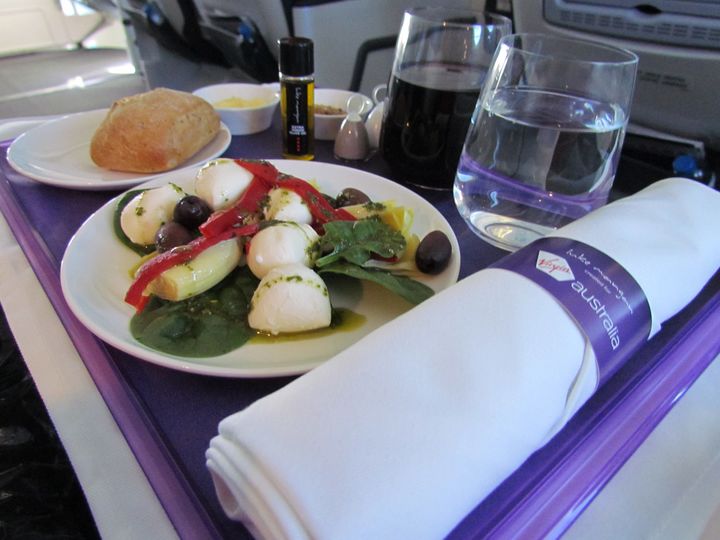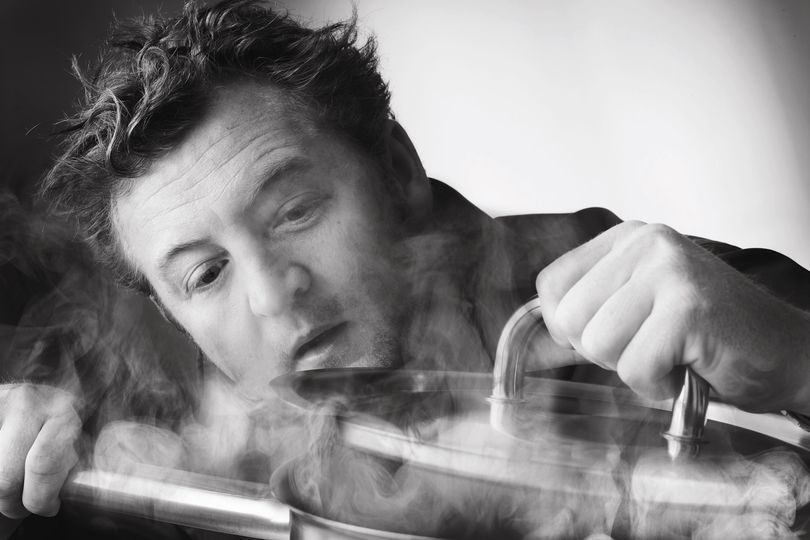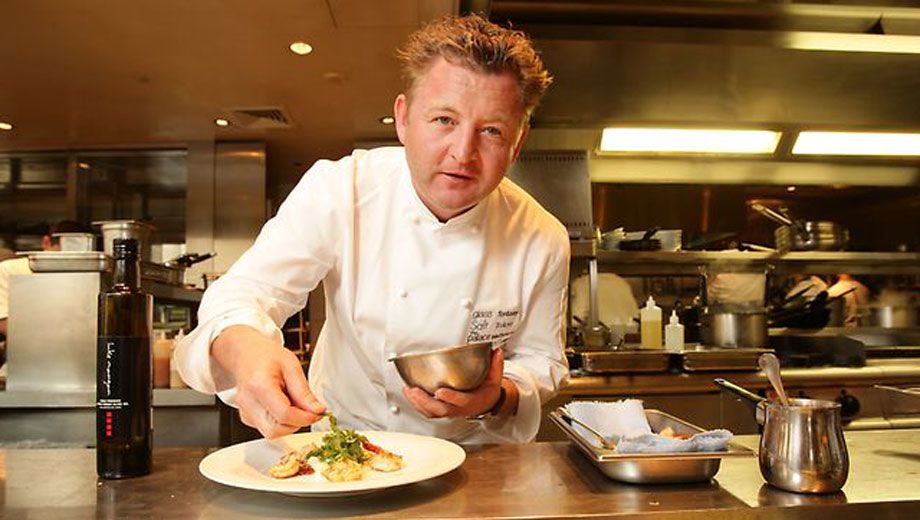Many airlines have joined forces with famous chefs to try to upgrade up their in-flight food: think of Qantas and Neil Perry, British Airways and Heston Blumenthal, and Joel Robuchon's work with Air France.
One of the most recent chef-airline alliances is Luke Mangan's role as consulting chef for Virgin Australia, which follows the restaurateur's partnerships with Virgin Atlantic and Virgin America.
"What we're trying to do, especially in business class, is bring a restaurant to the air" Mangan told Australian Business Traveller. "Putting food in the air and trying to get restaurant-quality food in the air is a challenge. But it's a good challenge, because I know we can do it."
Keeping it simple in the air
"A lot of people think it's quite difficult to put food in the air, but if it's kept simple and the quality of the produce is great then you shouldn't have any problems," Mangan insists.
Part of that is using the best Australian ingredients. "We have some of the best products and produce in the world, so I like to showcase it," he says.

Mangan keeps the Virgin Australia menus seasonal, which is part of the trick to getting the right food in the sky -- along with extensive testing of every meal option.
Tried and tested -- or new and revolutionary?
"I've got a team of chefs (working on Virgin Australia) and I go in and oversee, test-taste, to make sure that it's going to work," Mangan says.
"It may be that some of those dishes we're doing in the air are dishes we've had on in the restaurant, so they're true, tried and tested. We also have a test kitchen, and we're testing dishes all the time for new menus. We're always testing and creating. We've just got to make sure that they work in the air."
The key to making them work is "keeping it simple, to be honest, and not trying to complicate it. Soups, salads and braises work really well, because you can keep the moisture in."
Meat, and how not to cook it
We asked Mangan why beef, of all things, often turns into leather in the air.
"It's one of those things where you have to cook things on the ground a little bit: sear them, and so on. But you can't have a medium rare beef, really, because of the ovens. If the plane's in turbulence or something like that, and the oven's already on and it's only supposed to be on for fifteen minutes, they may be on for another ten minutes."
"That's when food starts to get overcooked, so that's where my job is to be smart and say, 'beef fillet's not the ideal cut of meat to put on a plane.' We're learning that each time. You need foods with high fat content, and that's why braises work so well -- and oily fish, like barramundi."
The cutting edge of inflight food technology

We discussed the future of airline food, with Mangan keen to get sous-vide methods on planes. (Sous-vide involves sealing food in air-tight plastic and then cooking it in a water bath, like a low-temperature sealed poaching.)
"We use that a lot in our restaurants. We do on the ground in the kitchens. It's something we're experimenting with, reheating up in the sky with sous-vide."
The best food in the sky
We asked Mangan which airlines he particularly rated for food.
"I've flown Swiss, and that was quite impressive, recently. I had a really nice soup, well flavoured, hot and perfect."
"I think Virgin America is very good. They get it -- they understand it. I'm on a plane and I have my food, everything's hot, tasty, not dry and full of flavour. It doesn't have to be a new creative dish -- it can be something simple like a pumpkin soup with curry spices, or a braised lamb shank with polenta."
But at the end of the day, Mangan has a simple motto.
"It comes back to simplicity and letting the ingredients speak for themselves. People don't want a really heavy, rich meal on a plane, I find. I fly a lot, and I don't want that. If we can keep it full of flavour, light, clean and healthy, as we do in our restaurants, that's where we'll win the customer over."
Stay tuned for more of Australian Business Traveller's Food Week stories all week at ausbt.com.au and on Twitter: @AusBT -- and don't miss all our Food Week articles!

27 Mar 2012
Total posts 1
Luke Mangan or Mangled?
Two ghastly experiences in a row with Virgin Pacific trans Tas. food service. The menus extols the virtues of Luke but might be a good idea if Luke did some flight testing before his reputation suffers much more.
The Managan succulent Beef pie seemed to owe more to a Taiwanese abattoir output than a high class chef. Having researched Luke and recognising his obvious talents, I would guess that Virgin are not doing the best by him or the Taiwanese abbatoir industry. Three lumps of gristley meat total is not reaching for new heights of culinary excellence. And I repeat this is not a one off
I am a long standing AirNZ frequent flyer and this partnership with Virgin just aint right. Poles apart in service delivery
Qantas - Qantas Frequent Flyer
13 Jul 2012
Total posts 43
I would take the pie over th Mangan Wrap any day. Not enough meat, overpowered by the cheese.
I've enjoyed the pie a few times and have yet to strike gristle.
I agree he is putting his name out their for potential embarassment.
Hi Guest, join in the discussion on Luke Mangan explains which food works best in the sky